S-1
Room LL21ABC
9:00 am -1:00 pm
|
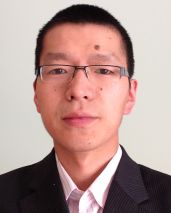 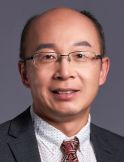
Yajie Dong Xiao Wei Sun
Univ. of Central Florida Southern University of
Science and Technology
|
S-1: Fundamentals of Quantum Dots and Their Application to Displays
|
The quantum dots (QDs) reviewed in this short course are chemically synthesized colloidal QDs. They are semiconducting nanocrystals, also known as artificial atoms. Their size is only a few nanometers, which is close to or smaller than their electron Bohr radius. A strong quantum confinement effect will occur, which is reflected by the fact that the emitted color of the QD is directly dependent on the size of the QD.
After years of research and development, state-of-the-art synthesized QDs are now known for their high quantum yield and narrow emission bandwidth, making them suitable for practical applications for displays, though there is still some development to be done for lighting applications. In this course, we will review the fundamentals of QDs, including their development history, the critical parameters to define QDs (size, composition, [core/shell or alloyed] structures, and shape, etc.), the cadmium (Cd) issue, and the physical properties of QDs (absorption, photoluminescence, quantum yield, bandwidth, blinking issues), etc. We will also introduce the development of applying QDs to displays, which includes photoluminescence (PL) and electroluminescence (EL).
• In PL, we will explain the application of QD as the backlight of an LCD; we will introduce QD Tube, QD enhancement film (QDEF), QD on-chip, and QD color filter applications. We will also discuss the remaining issues in the QD-LCD backlight.
• In EL, we will discuss the device structure and operating mechanism, ways to improve the device performance, degradation issues, etc. We will also describe inkjet printing of the color pixel patterning of the QLED.
Yajie Dong is an assistant professor in the NanoScience Technology Center at the University of Central Florida with a joint appointment in the College of Optics and Photonics and the Department of Materials Science and Engineering. He received his B.S. and M.S. degrees from the Tsinghua University of Beijing, China, and his Ph.D. from Harvard University. Before joining UCF in 2014, he worked as a senior scientist at QD Vision and as a postdoc associate at the Massachusetts Institute of Technology. He is an associate editor of Optics Express and a member of the Emissive Display (EMD) subcommittee of the SID Technical Program Committee.
Xiao Wei Sun presently holds a chair professor position at the Southern University of Science and Technology in Shenzhen, China. He is also the head of the Electrical and Electronic Engineering Department and the acting dean of the College of Engineering. Before joining Southern University of Science and Technology, he was a professor at the Nanyang Technological University in Singapore. Dr. Sun was awarded the Nanyang Award for Research and Innovation in 2009, the 1000 Talent Award by the Chinese Government in 2012, and the Jacques Beaulieu Excellence Research Chair of INRS (Institut national de la recherche scientifique), Quebec, Canada, in 2013. He is an Academician of the Asia-Pacific Academy of Materials. Dr. Sun is a Fellow of several academic societies, including the Optical Society of America (OSA), SPIE, the Society for Information Display (SID), and the Institute of Physics (IoP, UK). He is the founder and president of the Society for Energy Photonics, a non-profit organization promoting photonics technologies to solve energy crisis issues and combat global warming and climate change. In addition, he is an adjunct professor in the Electrical and Electronic Engineering Department of the Hong Kong University of Science and Technology.
|
S-2
Room LL21DEF
9:00 am -1:00 pm
|
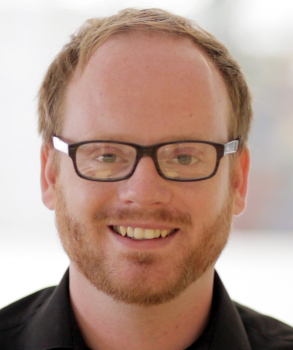 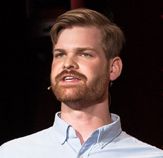 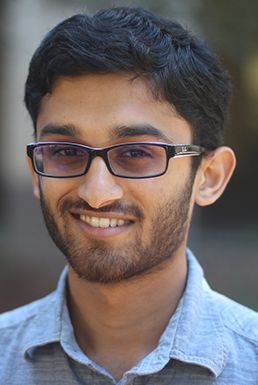
Gordon Wetzstein Robert Konrad Nitish Padmanaban
Asst. Prof. Electrical Engr. Dept Ph.D. Candidates
Asst. Prof. Computer Sc. Dept. Electrical Engineering
Stanford University Stanford University
|
S-2: Fundamentals of Virtual- and Augmented-Reality Technologies
|
|
Wearable computing is widely anticipated to be the next computing platform for consumer electronics and beyond. In many wearable computing applications, most notably virtual- and augmented-reality (VR/AR), the primary interface between a wearable computer and a user is a near-to-eye display. A near-to-eye display, in turn, is only a small part of a much more complex system that delivers these emerging VR/AR experiences. Other key components of VR/AR systems include low-latency tracking of the user’s head position and orientation, magnifying optics, sound synthesis, and content creation. It can be challenging to understand all of these technologies in detail due to the fact that only limited and fragmented educational material on the technical aspects of VR/AR exist today. This course serves as a comprehensive introduction to VR/AR technology to conference attendees. We will teach attendees how to build a head-mounted display (HMD). Throughout the course, different components of the VR system are taught and implemented, including the graphics pipeline, stereo rendering, lens distortion with fragment shaders, head orientation tracking with inertial measurement units, positional tracking, spatial sound, and cinematic VR content creation. At the end, attendees will have built a VR display from scratch and implemented every part of it. All hardware components are low-cost and off-the-shelf; the list will be shared with attendees. For maximum accessibility, all software is implemented in WebGL and using the Arduino platform. Source code will be provided to conference attendees.
Gordon Wetzstein is an assistant professor of electrical engineering and, by courtesy, of computer science at Stanford University. He is the leader of the Stanford Computational Imaging Lab, an interdisciplinary research group focused on advancing imaging, microscopy, and display systems. At the intersection of computer graphics, machine vision, optics, scientific computing, and perception, Professor Wetzstein's research has a wide range of applications in next-generation consumer electronics, scientific imaging, human-computer interaction, remote sensing, and many other areas. Prior to joining Stanford in 2014, Wetzstein was a research scientist in the Camera Culture Group at the MIT Media Lab. He received a Ph.D. in computer science from the University of British Columbia in 2011 and graduated with honors from Bauhaus University in Weimar, Germany, before that. His doctoral dissertation focuses on computational light modulation for image acquisition and display and won the Alain Fournier Ph.D. Dissertation Annual Award. Wetzstein is the recipient of an NSF CAREER award. He has won best paper awards at the International Conference on Computational Photography (ICCP) in 2011 and 2014, as well as a Laval Virtual Award in 2005.
Robert Konrad is a fourth-year Ph.D. candidate in the electrical engineering department at Stanford University, advised by Professor Gordon Wetzstein as part of the Stanford Computational Imaging Lab. His research interests lie at the intersection of computational displays and human physiology with a specific focus on virtual- and augmented-reality systems. Konrad has recently worked on relieving vergence-accommodation and visual-vestibular conflicts present in current VR and AR displays, as well as a computationally efficient cinematic VR capture system. He received his bachelor’s degree from the ECE department at the University of Toronto in 2014, and his master’s degree from the EE Department at Stanford University in 2016.
Nitish Padmanaban is a fourth-year Ph.D. candidate in the electrical engineering department at Stanford University, supported by an NSF Graduate Research Fellowship. Professor Gordon Wetzstein advises him as part of the Stanford Computational Imaging Lab. Currently, Mr. Padmanaban is focused on optical and computational techniques for virtual and augmented reality. In particular, he has spent the last couple of years working on building and evaluating displays to alleviate the vergence-accommodation conflict. Padmanaban has also looked into the role of the vestibular system conflicts in causing motion sickness in VR.
|
S-3
Room LL21ABC
3:00 pm - 7:00 pm
|
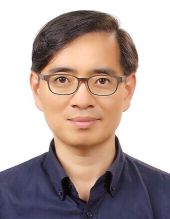 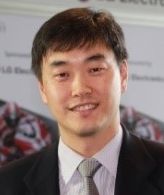
Min Chul Suh Byung Doo Chin
Kyung Hee University Dankook University
|
S-3: Fundamentals of Flexible OLEDs and Manufacturing of Flexible OLEDs
|
|
Professor Min Chul Suh will describe basic principles of OLED operation, flexible OLED materials, and device structures based on industrial activities aiming for flexible AMOLEDs. There will be a focused discussion on the basic elements for making a flexible AMOLED. For example, the course will cover various topics related to materials and processes such as flexible substrates, flexible-film handling techniques, OLED pixel-forming technology, thin-film encapsulation technology, etc. This short course will also contain the current technical status and technology challenges based on flexible electronics viewpoints.
Professor Byung Doo Chin will describe emerging technologies in the manufacturing of flexible AMOLEDs such as novel flexible substrates and film handling for curved/flexible panels. Precise micro-scale patterning methods that can resolve challenges associated with large-area front-plane pixel-forming processes will be discussed, both for vacuum and solution-based technologies. This part of the course will examine the current technical status of flexible device manufacturing, while some future advancements in manufacturing processes such as surface treatment, coating, direct printing, transferring, high-resolution patterning, and inspection process may also be investigated.
Min Chul Suh is a professor in the department of information display at Kyung Hee University in Seoul, Korea. He received his Ph.D. in 1998 in chemistry at the Korea Advanced Institute of Science and Technology. Previously, he worked as a group leader in R&D at Samsung SMD and as a technical project leader in R&D at Samsung SDI. He has over 15 years of experience in AMOLED and future display technologies, with an interest in perovskite LEDs, OLEDs, flexible OLEDs, and many other emerging technologies. He has published over 100 research papers. He has served in a variety of capacities for the Korean Information Display Society (KIDS), including as finance director.
Byung Doo Chin is a professor in the polymer science and engineering department at Dankook University, Korea. He received his B.S. from Yonsei University of Korea and a M.S./Ph.D. degree from the Korea Advanced Institute of Science and Technology (KAIST). Before joining Dankook University in 2009, he worked as a postdoctoral scientist at the University of Massachusetts Amherst, a senior engineer at Samsung SDI R&D Center, and the Korea Institute of Science and Technology (KIST). His research fields of choice for more than 18 years (about 80 research papers) have been AMOLED front-plane device physics and fabrication processes, quantum-dot light-emitting devices patterned by inkjet/nozzle printing, and light-extraction structures for flexible OLEDs. He presently serves as a general affairs director of the Korean Information Display Society (KIDS).
|
S-4
Room LL21DEF
3:00 pm - 7:00 pm
|
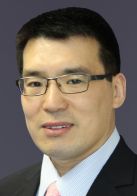
George Zhaojun Liu
Assistant Professor
Southern University of Science and Technology
|
S-4: Fundamentals of MicroLEDs and Their Applications
|
| This short course will introduce and focus on several fundamentals of microLEDs, including material epitaxy, the working principle of devices, design and fabrication methods, driving schemes, mass transferring and monolithic integration, and realization of full colors. Past, current, and future microLED development trends will also be discussed.
George Zhaojun Liu is a tenure-track assistant professor (and associate professor) in the electrical and electronic engineering department at the Southern University of Science and Technology. He is also a joint associate professor in Shenzhen Institute of Wide-Bandgap Semiconductors. His research topics cover microLEDs, wide-bandgap semiconductor material and devices, VR/AR, and wearable devices. He served as the co-chair of the Quantum Dots and MicroLEDs special technology track at Display Week 2018 and is a member of the Emissive, MicroLED, and Quantum-Dot Displays (EMQ) subcommittee of the SID Technical Program Committee. He serves as technical committee member of the SID Beijing Chapter and MicroLED committee of the 3rd Generation Semiconductor Alliance. He is the general secretary of the Guangdong MicroLED Alliance (MiLEDA). He is the founder of Shenzhen SiTan Tech., Ltd.and LEDoS Tech., Ltd.
|